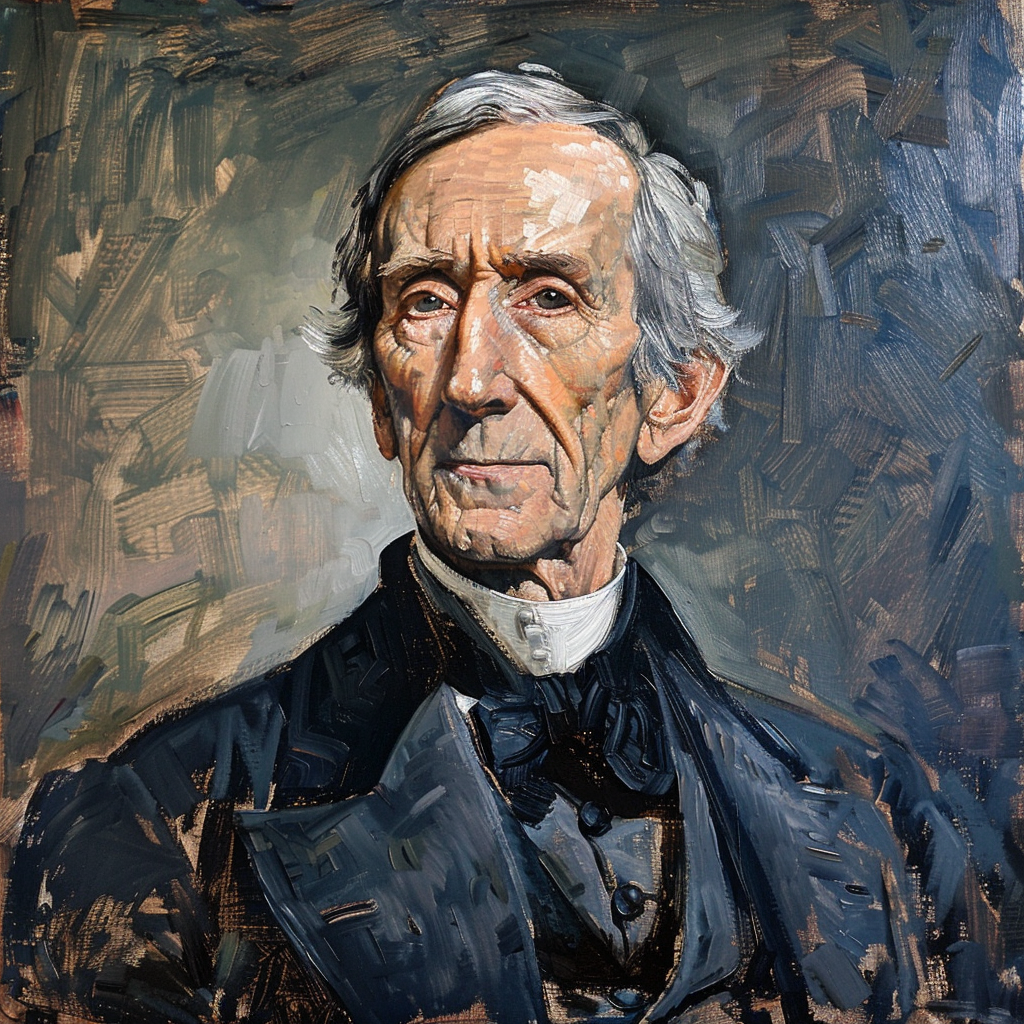The 7th President of the Union of American States.
The Presidency of John Tyler (1844 – 1849)
The Temporary Stabilizer: A Puppet of the Aristocracy
1844: Tyler’s Selection—The Aristocracy’s “Moderate” Choice
Following John C. Calhoun’s incapacitation due to a major stroke in 1844, the ruling elite of the Union scrambled to find a replacement who could stabilize the nation without undermining the aristocratic order.
The Planter Council, wary of Calhoun’s increasingly erratic and paranoid rule, turned to John Tyler, a wealthy plantation owner and longtime aristocratic politician.
Tyler was not a reformer, nor was he particularly innovative—he was simply a safe, obedient choice who could preserve the aristocracy’s power without the instability of Calhoun’s excesses.
His rule was characterized by:
- Preserving the status quo rather than expanding tyranny.
- Calming political tensions between the aristocracy and the nationalist faction.
- Restoring some order after Calhoun’s purges had left the government in chaos.
Tyler’s presidency was not a break from the past, but a temporary pause in the escalating brutality of the Union’s governance.
1845-1846: The Rebuilding Years & The “Moderate” Reforms
With Calhoun out of the picture, Tyler sought to repair the damage done by years of unchecked paranoia and political purges.
- 1845: He reinstated several aristocratic families who had been purged under Calhoun, restoring balance within the ruling class.
- 1846: He softened the enforcement of some of the most extreme labor policies, allowing a small degree of economic mobility among lower-tier aristocrats and overseers.
However, these reforms were not meant to create a freer society—they were meant to ensure that the system remained stable and functional.
1847: The Expansion of Industry & the Strengthening of the Military
Unlike Calhoun, who viewed industrialization as a threat to the traditional plantation economy, Tyler embraced industrial expansion, so long as it remained under aristocratic control.
- He poured resources into industrial districts, particularly in Charleston, Mobile, and Jacksonville.
- He expanded state-controlled manufactories, using enslaved labor to produce weapons, textiles, and military equipment.
- He strengthened the Union Army, preparing for future conflicts with Louisiana and New England.
While his policies modernized portions of the economy, they did not change the underlying structure of servitude and aristocratic dominance.
1848: The Brewing Storm—Nationalism vs. Aristocracy
Though Tyler’s rule kept the aristocracy satisfied, a growing nationalist faction began to challenge the old order.
- Some believed that the Planter Council had too much power, and that the President should have more authority to govern independently.
- Others feared that the Union’s economy was stagnating, and that reforms were necessary to compete with New England and Louisiana.
- Zachary Taylor, a military general with nationalist leanings, emerged as a vocal critic of Tyler’s administration.
Tyler, while loyal to the aristocracy, was not as ruthless as his predecessors—he did not immediately move to crush these dissenters.
This hesitation allowed the nationalist movement to grow, setting the stage for a major political confrontation in the next election.
1849: The Election of Zachary Taylor & Tyler’s Quiet Exit
By 1849, Tyler chose not to seek re-election, instead endorsing an aristocratic candidate who was ultimately defeated by Zachary Taylor.
The election of Taylor marked the first true challenge to aristocratic rule in decades, as Taylor sought to re-centralize power under the federal government and curb the unchecked influence of the Planter Council.
Though Tyler peacefully stepped aside, many of his former allies would soon work to undo Taylor’s presidency through conspiracy and assassination.
Legacy of John Tyler’s Presidency
✔ Restored some stability after Calhoun’s chaotic rule.
✔ Expanded industrialization, strengthening the Union’s economy.
✔ Avoided escalating political violence, allowing the nationalist faction to grow.
✔ Oversaw a peaceful transition of power to Zachary Taylor (though aristocrats would later conspire against him).
Tyler is often remembered as a mere placeholder—a man who kept the ship afloat but did little to change its course. His moderate governance allowed the nationalist movement to rise, ultimately leading to the assassination of his successor and the brief return of Calhoun in 1850.

